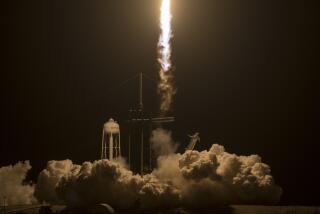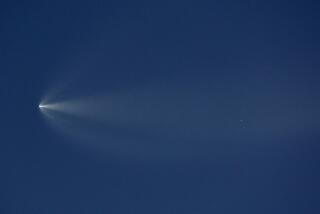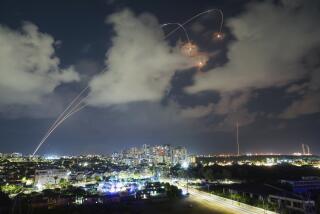Problem-plagued missile defense system fails in $214-million test
The Pentagonâs Missile Defense Agency once again missed hitting its desired target during flight test of an interceptor missile from Vandenberg Air Force Base, northwest of Santa Barbara.
The failure of the $214-million test Friday involved a ground-based defense system, designed by Boeing Co., to defend the U.S. from long-range ballistic missile attacks.
The Missile Defense Agency now has a testing record of eight hits out of 16 intercept attempts with the âhit-to-killâ warheads. The last successful intercept occurred in December 2008.
Intercept testing of the system was halted in early 2011 after errors resulted in two failed intercept tests in 2010 using a newer interceptor. The technology wasnât used Friday, but will be tested next year.
During the test, a target missile was fired at 11:30 a.m. PST from Kwajalein Atoll in the Marshall Islands. Five minutes later, a three-stage interceptor was launched from a silo at Vandenberg.
After blastoff, the booster is designed to deploy a kill vehicle made by Raytheon Co. to hit the target at a designated point in space.
The kill vehicle is designed to lock on and eliminate high-speed ballistic missile warheads in space using nothing more than the sheer force of impact, known as a âhit-to-killâ defense, according to Raytheon.
The Missile Defense Agency did not yet know the cause of test failure. The agency said it is reviewing what occurred during the entire course of the test.
Itâs a significant blow for the ground-based system of 30 interceptors in Alaska and California, which the Government Accountability Office estimated would cost taxpayers $40 billion from 1996 to 2017.
Despite the poor track record, the Pentagon plans to add 14 missile interceptors in Alaska to counter North Korea, which has issued threats since it tested an underground nuclear device and launched a small satellite. The Pentagon expects cost of the expansion to be $1 billion.
ALSO:
F-35 fighter jet struggles to take off
AeroVironment revenue plunges 51% in fourth quarter
GenCorp. announces leadership for newly formed rocket company
More to Read
Inside the business of entertainment
The Wide Shot brings you news, analysis and insights on everything from streaming wars to production â and what it all means for the future.
You may occasionally receive promotional content from the Los Angeles Times.











